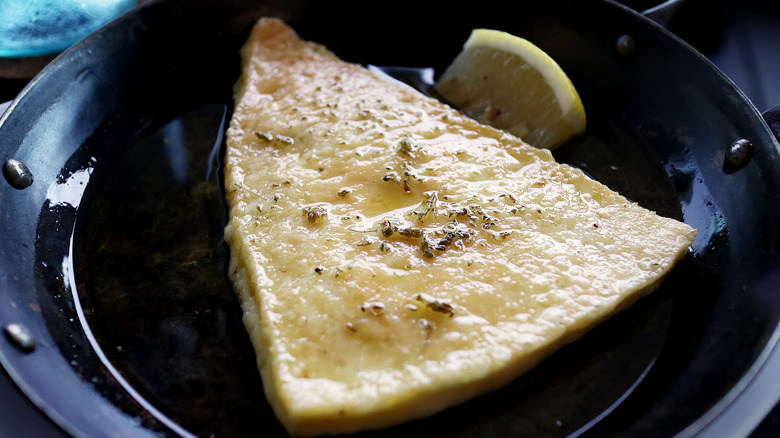Saganaki: The Fried Greek Cheese You Need To Try Yesterday
When it comes to traditional Greek dishes, many people know about gyros and baklava. However, not as many may have experienced the wonder of dishes like saganaki, or fried Greek cheese — at least not in its most traditional form.
Historically speaking, saganaki was born out of a culture heavily involved in sheep and goat herding. The Greeks found themselves with an abundance of milk, so why not make cheese? Over time, the dairy product and all its delicious variations became an easy meal for all classes of Greek society, and as such, this dish made itself part of both everyday life and milestone celebrations.
That being said, some scholars suggest the concept of saganaki has Turkish origins, due to the cheese being cooked in small frying pans known to the Turks as "sagani." Wherever saganaki's true origins lie, the fact remains that this fried cheese dish has only gotten more popular over recent decades, and as a result, increasingly more versions exist across the world.
How is traditional Greek saganaki made?
In its most traditional sense, saganaki is made with semi-hard, salty cheeses derived from sheep or goat milk. Popular cheese choices include halloumi, graviera, and feta, as the dish requires a firm cheese that can hold its shape when fried. Some versions might use cheddar or gouda in place of goat cheese.
Regardless of the type used, the blocks of cheese can be first dipped in an egg wash, though many skip straight to dredging in flour and frying until the entire outside is crispy. The inside melts into a rich gooey cheese, providing the simplest yet most satisfying textural contrast. As such, saganaki is best served hot, before the cheese stiffens and loses its appeal.
When served in Greece, saganaki might be topped off with fresh lemon juice, oregano, sun-dried tomatoes, olives, or even a drizzle of honey for juxtaposition. However, saganaki can be served in countless different ways, be it with nuts, pomegranate seeds, or tomato sauce. It's kind of like a Greek take on the mozzarella stick, if you think about it.
Saganaki comes in many versions today
Being that saganaki has been around for centuries, it should come as little surprise that the dish now has more variations than anyone could ever count. Perhaps the most famous — especially among Americans — is flaming saganaki. Like the name implies, flaming saganaki is a block of cheese set ablaze tableside for diners' entertainment, usually eliciting a cheer of "Opa!"
This rather dramatic variation of saganaki was created in 1968 at Chicago's Parthenon restaurant, and quickly spread across the country. Today, you can order flaming saganaki at most Greek restaurants in the U.S., but for the most part, this version appears only in heavily touristy areas in Greece itself.
Instead, the country's restaurants serve the traditional form of saganaki, sans flame, and most commonly with a simple dash of lemon juice. Whether fresh or bottled lemon juice is used, the juice's acidity cuts through the richness of the cheese, again bringing diners just the right amount of contrast.



